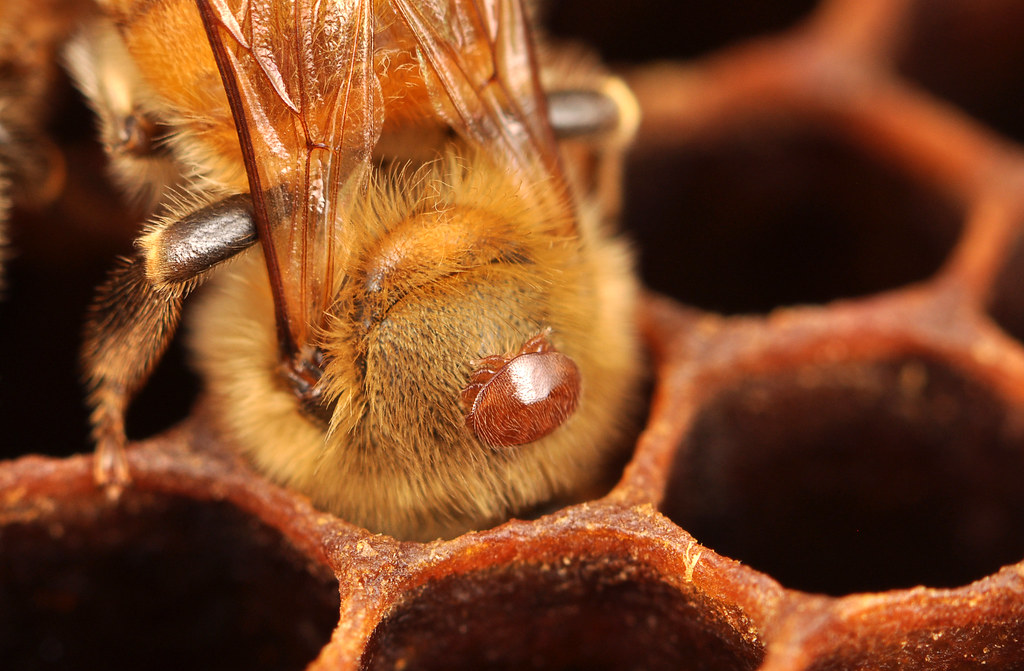Varroa mites (Varroa destructor) are one of the biggest threats to honeybee colonies, acting as parasites that weaken bees and transmit harmful viruses. But how long can varroa mites survive without a host? Understanding the life cycle and survival tactics of these mites is crucial for effective management and control. In this article, we’ll explore the conditions under which varroa mites can live without bees and what this means for beekeepers.
The Life Cycle of Varroa Mites
Varroa mites have a complex life cycle that revolves around honeybees, specifically the brood. Female mites enter brood cells before they are capped, laying their eggs inside the cell, where the emerging mite larvae feed on the developing bee. Once the bee emerges as an adult, the mature female mites hitch a ride and feed on the adult bee’s hemolymph.
While varroa mites spend the majority of their lives either on adult bees or inside brood cells, there are periods where they may be separated from a host. Understanding how long varroa can survive during these periods is essential for managing infestations.
How Long Can Varroa Mites Survive Without a Host?
The survival time of a varroa mite without a host depends on several factors, including the environmental conditions (temperature, humidity) and whether there is brood present in the hive.
- In the Hive Without Brood
When there is no brood in the hive (e.g., during winter or periods of broodlessness), varroa mites depend entirely on adult bees for survival. In these conditions, the mites can remain attached to adult bees for several weeks, but if they fall off or are otherwise separated from the bees, they cannot survive long.- Without Bees: Varroa mites can typically survive for about 2-3 days without direct access to a bee host. During this time, they are essentially “waiting” for a new host, but they are at a disadvantage if they cannot reattach to a bee quickly.
- Outside the Hive
When varroa mites are outside the hive, such as on hive equipment or in debris, their survival time drops significantly, especially if they are not in a controlled environment.- Temperature and Humidity Impact: Mites are highly sensitive to environmental conditions. In warm and humid environments, varroa mites might survive a few days, but in dry and cold conditions, they may die within 24 hours.
- No Host Available: Once separated from a hive or bees, varroa mites usually cannot survive more than 3 days under normal environmental conditions. This is particularly true if they have no access to adult bees to feed on.
- Brood Cells as Safe Havens
Varroa mites are best adapted to survive and reproduce inside brood cells. In capped brood cells, they can survive for several weeks until the new bee emerges. If there are no brood cells available, their ability to survive decreases dramatically.- Survival in the Absence of Brood: Without brood, the mite’s reproductive cycle is disrupted, but they will continue to live on adult bees as long as possible. They can survive on adult bees for weeks, although their reproductive capabilities are halted until they can find new brood.
Why Survival Without a Host Matters for Beekeepers
Knowing how long varroa mites can survive without a host is critical for managing infestations and preventing their spread. Some important implications include:
- Hive Cleaning and Equipment Storage
Since varroa mites can survive a few days on hive debris or equipment, it is essential to clean tools, equipment, and hive boxes properly. Letting hives sit for several days before reintroducing bees can help reduce the mite population, but if the mites are attached to bees, they can quickly re-infest a hive. - Brood Breaks as a Treatment Strategy
A common varroa control method is creating a “brood break,” where the queen stops laying eggs for a period of time, leaving no brood for mites to reproduce in. During this time, varroa mites can only survive on adult bees. If beekeepers treat the hive with miticides during the broodless period, they can effectively reduce mite numbers. - Mite Spread Between Colonies
Varroa mites can also transfer from hive to hive through robbing or drifting bees. Mites that fall off robbing bees or enter new colonies can reattach to new hosts and begin reproducing. Understanding how long mites can survive on the hive’s exterior highlights the importance of reducing bee-to-bee contact between hives.
Conclusion
Varroa mites are heavily dependent on honeybees for survival. Without a host, these mites can only live for a few days under most conditions. However, when attached to adult bees or nestled inside brood cells, they can persist for weeks and continue to damage the colony. For beekeepers, controlling varroa mite populations involves a combination of treatments, hive hygiene, and understanding the mite’s life cycle. By targeting mites during periods when they are most vulnerable—such as during broodless periods or when separated from hosts—beekeepers can help protect their colonies from the destructive impact of Varroa destructor.
Further Reading:
- National Bee Unit – Varroa Mite Biology and Control
- Bee Informed Partnership – Varroa Management
- International Bee Research Association – Survival of Varroa Without Hosts

